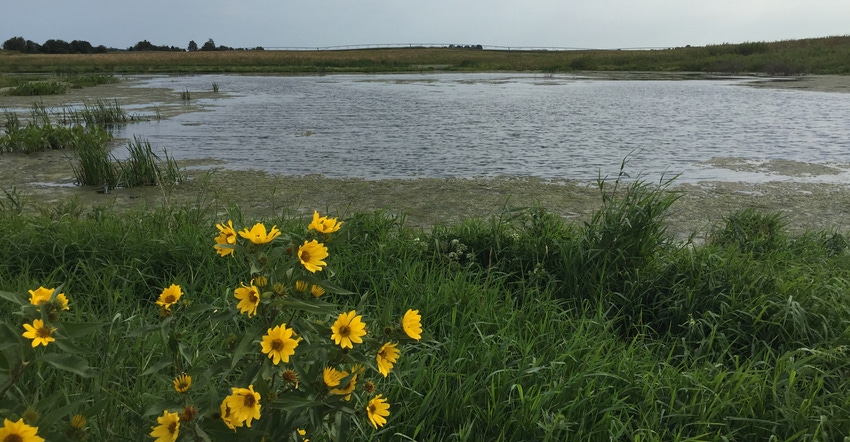October 20, 2017

By Matt Helmers
When the Iowa Nutrient Reduction Strategy’s Nonpoint Source Science Assessment reviewed the water quality performance of a range of conservation practices, most of these studies were conducted at field-plot scale. At the time, the assessment highlighted the need for small-watershed-scale assessments of practice performance to further evaluate how well these practices do in reducing stream nutrient delivery.
A new project called the Conservation Learning Labs (CLL) answers this call on two small watersheds in Floyd and Story counties.
A critical aspect to being able to do this type of assessment is detailed water quality monitoring, so we can document impacts of nutrient reduction practice implementation. The two watersheds were picked because they both drain into Conservation Reserve Enhancement Program (CREP) wetlands with ongoing long-term monitoring data conducted by Bill Crumpton at Iowa State University in conjunction with the Iowa Department of Agriculture and Land Stewardship.
Monitoring performance of wetlands
As part of Iowa CREP, Crumpton and his team monitor the performance of 10 to 15 wetlands each year. This monitoring includes continuous flow monitoring and close interval water quality monitoring for nutrients into and out of these wetlands. This monitoring effort is documenting the performance of these CREP wetlands. An added bonus is that the water and nutrients entering the wetland are the output from the watershed upstream of the wetland.
These watersheds are routinely in the range of 1,000 acres. A critical aspect of the watersheds is that inflow to the wetland and outflow from the watershed is the point at which water and nutrients are delivered to the stream. As such, they are a prime location for monitoring nutrient delivery to the stream. This is critical for documenting the impact that in-field practices, such as cover crops, can have on field-to-stream transport of nutrients, and results at this delivery scale would not be confounded with in-stream processes.
It’s because of the availability of this monitoring information that Iowa Learning Farms, working with IDALS and USDA’s Natural Resource Conservation Service, chose the watersheds in Story and Floyd counties to be the first two CLLs. Both watersheds had the long-term water quality data, and we thought the landowners and farmers would be open to increasing their in-field conservation practice implementation to evaluate watershed scale outcomes.
Need to better understand nutrient loss
In addition to these two watersheds, we will also conduct water monitoring on comparison watersheds in each area. All of these systems being monitored (two in Story County and two in Floyd County) will have at least three years of water quality monitoring prior to conservation practices being implemented, and monitoring will continue after conservation practice implementation to document the watershed-scale impact on water quality.
We have termed this project the “Conservation Learning Labs,” because in the future, these watersheds or labs will help local and state stakeholders (including scientists) to better understand nutrient transport and the impact of conservation practices on water quality and soil health.
Be on the lookout for additional information in coming months and years related to what farmers are doing as part of the Conservation Learning Labs and what the water quality monitoring is telling us.
Helmers is an Iowa Learning Farms team member and Professor of Ag and Biosystems Engineering and in the College of Agriculture and Life Sciences at ISU.
You May Also Like




